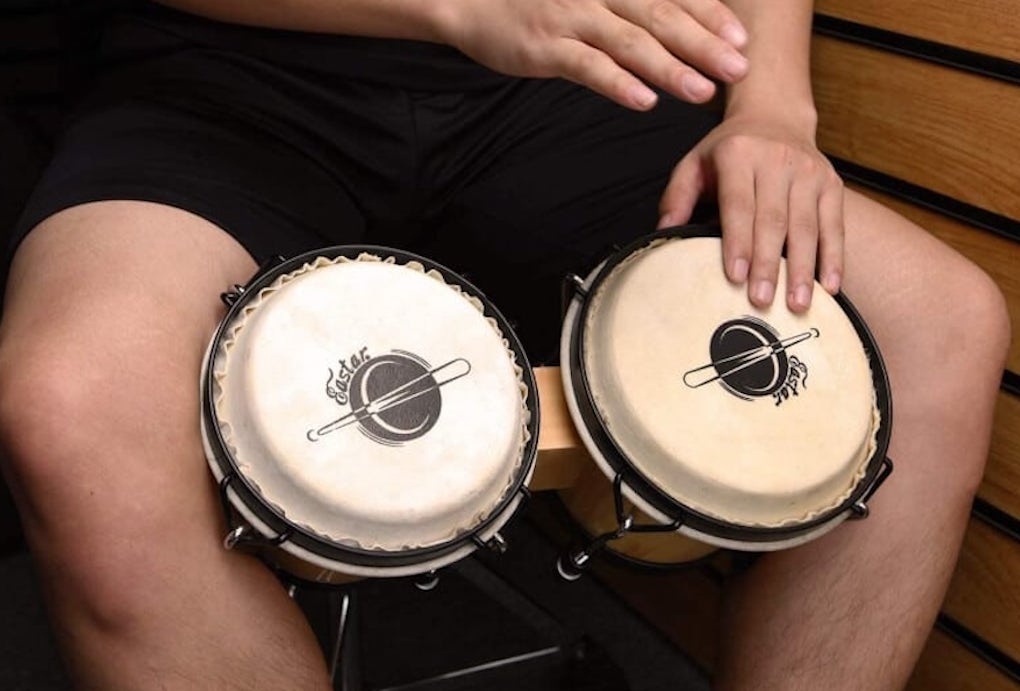- in Recording by Bobby Owsinski
2 Techniques For Miking Bongos
While some people think of bongos as a remnant from the old beatnik days, it’s surprising how often they’re used to add movement to a track. Here are a couple of techniques from my Recording Engineer’s Handbook, along with some additional aspects of the instrument to pay attention to.

Considerations
Before placing the microphone, there are a number of things about the instrument that need to be considered:
- Bongos are made up of two drums, the macho (smaller drum) and the hembra (larger drum).
- Tuning can be anywhere between a fourth and an octave between drums, depending upon the music.
- Always detune the smaller drum after use, since the head will either stretch or break because it’s tuned so tightly (if it’s tuned correctly).
- The room ambience might be important to the sound of the bongos and how they fit in the track, which means the mic will be placed further from the drums during placement
- Although bongos are usually played between the legs, they can also be played on a stand, as is the case with concert orchestras and bands. In this case they might played with mallets, drumsticks or the hands.
Placement
There are two primary microphone placements, although many variations are also used:
Technique #1: Place a mic from 18 to 24 inches directly above and slightly favoring the smaller drum. If pointed directly in the middle of the two, the larger drum will usually sound louder.
- Variation 1: Sometimes a dynamic mic, such as an SM57, helps the bongos stand out in the mix due to its midrange emphasis. Bongos aren’t a bright sounding instrument so you don’t need to worry about losing the upper frequencies when using a dynamic mic to capture them.
- Variation 2: Move the mic closer to the drum for less room sound and to increase their presence in the track.
Technique #2: If the player is sitting with the bongos in between his or her legs, try miking the bongos from underneath. Use a dynamic mic at a distance of at least 6 inches, again slightly aiming toward the smaller drum.
You can read more from The Recording Engineer’s Handbook and my other books on the excerpt section of bobbyowsinski.com.

